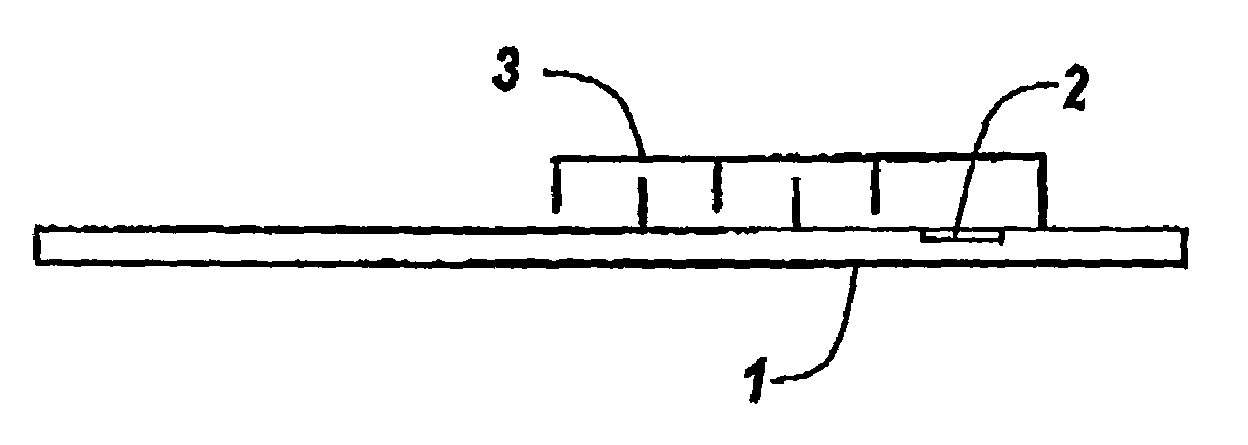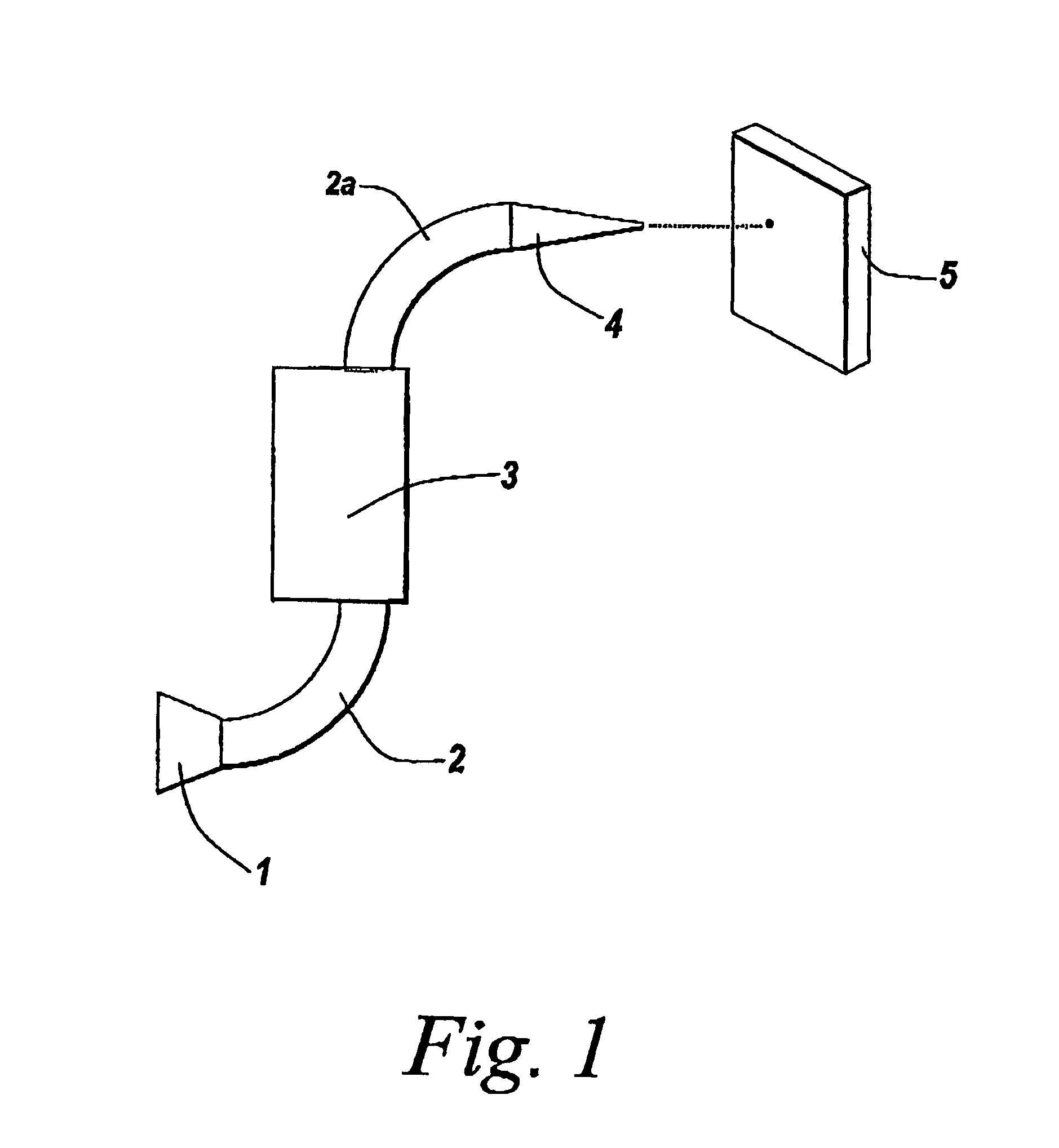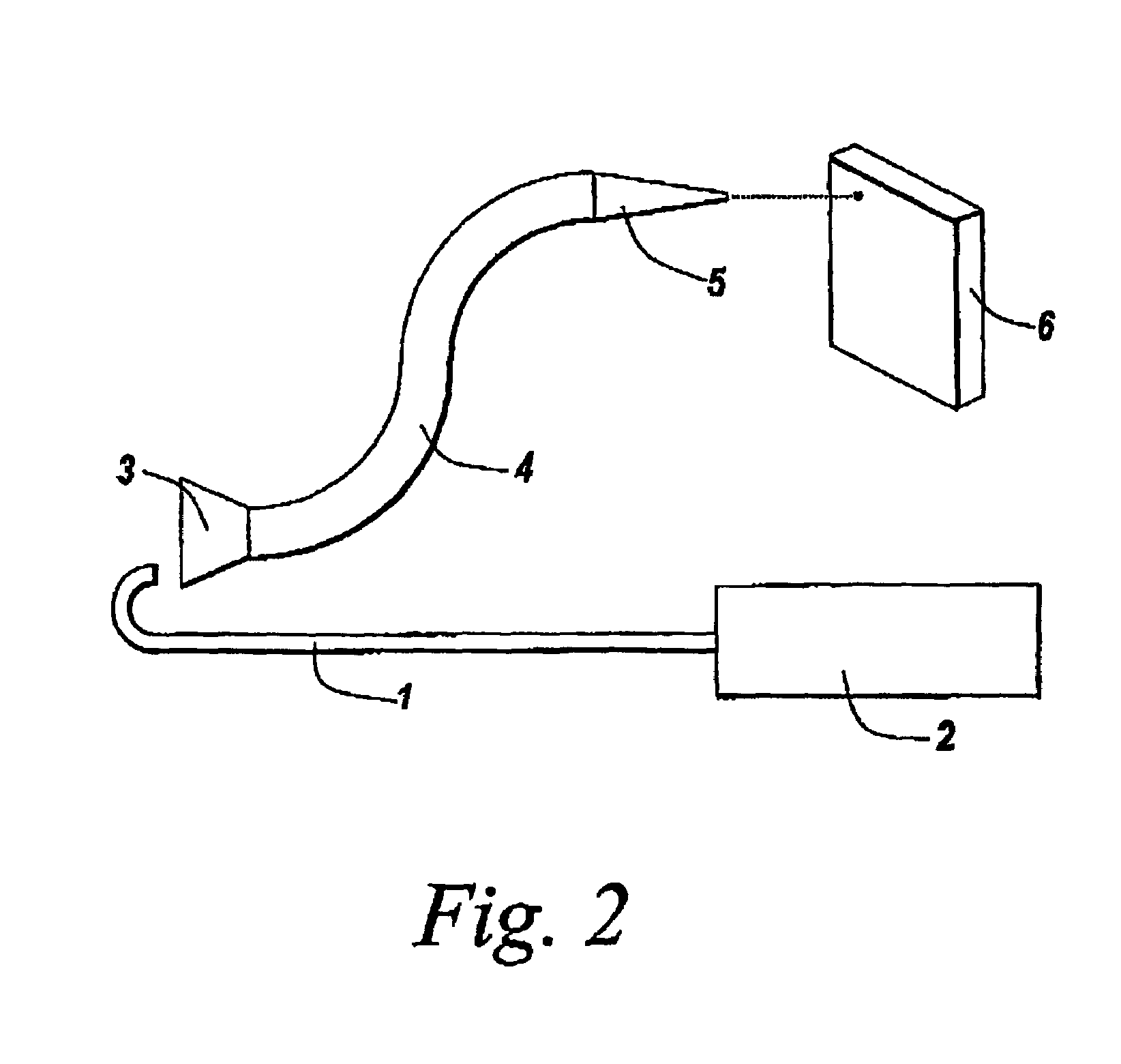Adsorption, detection and identification of components of ambient air with desorption/ionization on silicon mass spectrometry (DIOS-MS)
a technology of silicon mass spectrometry and component detection, applied in the direction of optical radiation measurement, isotope separation, particle separator tube, etc., can solve the problems of inability to quantitatively measure colorimetric indicators, limited instrument sensitivity, and inability to detect components of gas low concentration, so as to avoid thermal degradation of components
- Summary
- Abstract
- Description
- Claims
- Application Information
AI Technical Summary
Benefits of technology
Problems solved by technology
Method used
Image
Examples
examples
[0133]The invention is further illustrated by the following example, which should not be construed as further limiting.
Detection of Nicotine in Cigarette Smoke
[0134]A lit cigarette was mounted in a glass holder (a short segment of glass cut from a disposable pipette) and connected to the side-arm of an Erlenmeyer flask by inert plastic tubing. The mouth of the flask was fitted with a rubber stopper through which a glass disposable pipette was inserted. The end of the pipette projecting out of the flask was connected to a diaphragm pump, thereby forming a closed system extending from the burning cigarette, through the chamber of the flask, and finally to the pump. The pump was engaged in order to draw smoke from the cigarette into the chamber. When sufficient smoke had been collected, the pump was disengaged and replaced with a source of compressed air, and the cigarette and the holder were replaced with a glass disposable pipette. Gas flow through the system was reversed and the tra...
PUM
| Property | Measurement | Unit |
|---|---|---|
| porosity | aaaaa | aaaaa |
| porosity | aaaaa | aaaaa |
| positive voltage | aaaaa | aaaaa |
Abstract
Description
Claims
Application Information
 Login to View More
Login to View More - R&D
- Intellectual Property
- Life Sciences
- Materials
- Tech Scout
- Unparalleled Data Quality
- Higher Quality Content
- 60% Fewer Hallucinations
Browse by: Latest US Patents, China's latest patents, Technical Efficacy Thesaurus, Application Domain, Technology Topic, Popular Technical Reports.
© 2025 PatSnap. All rights reserved.Legal|Privacy policy|Modern Slavery Act Transparency Statement|Sitemap|About US| Contact US: help@patsnap.com



